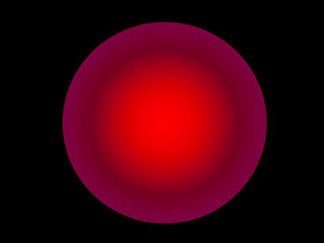Colour Gradients In Galaxies
The colours of galaxies vary widely and are primarily determined by two key properties of the stellar populations contained within them:
- Metallicity: the amount of metals contained within the stars determines whether a population will be redder (metal-rich) or bluer (metal-poor).
- Age: all else being equal (e.g. similar metallicities), an old stellar population is redder than one composed of young stars, since the high-mass (blue) stars evolve more rapidly than low-mass (red) stars.
Even within a single galaxy we often find variations in colour. These are generally manifest as colour gradients, with the centres of galaxies generally redder than their outer regions. Both early-type (elliptical and S0) galaxies and the bulges of spiral galaxies exhibit colour gradients, indicating that the age and/or metallicity of their stellar populations varies with distance from the centre. Leaving aside the effects of dust, this means that:
- The central regions of galaxies may be older than their outer regions.
- The central regions of galaxies may be more metal-rich than their outer regions.
Recent research has shown that metallicity is the primary cause for colour gradients in galaxies (the central regions of galaxies are more metal-rich than the outer regions). In fact, it turns out that the centres of galaxies are slightly younger than the outer regions which, in isolation, would cause the central regions to be bluer. The metallicity gradient must therefore be sufficiently strong to swamp the effects of this slight age gradient.
This build-up of metals in the central regions of galaxies is predicted by all galaxy formation models, though the strength of the gradient is dependent on the model. In each case, the metallicity gradient is a natural result of metals produced in the outer regions of the galaxy falling towards the centre before being incorporated into the next generation of stars. The comparison of observed metallicity gradients to those predicted by the different galaxy formation models is an active area of astrophysical research.
Study Astronomy Online at Swinburne University
All material is © Swinburne University of Technology except where indicated.


